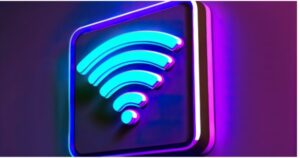In today’s digital age, it is common for people to share their WiFi network with family, friends and neighbors. However, it is important to be aware of who is using our network to protect our privacy and ensure proper functioning of the Internet connection. In this article, we will show you how to check who is connected to your WiFi network and how to protect your and your family’s privacy.
Why is it important to know who is connected to my WiFi?
There are several reasons why it is essential to know who is connected to our WiFi network. First, unauthorized use of our Internet connection can lead to slow browsing and file downloading. In addition, it can cause an increase in data consumption, which could generate additional costs if the limit set by our Internet service company is exceeded.
Secondly, having intruders in our WiFi network can generate security problems. Cybercriminals could take advantage of an unprotected connection to access our personal information, such as passwords, bank details and photographs. They could also use our connection to carry out illegal activities without our consent.
How can I find out who is connected to my WiFi?
There are different methods to verify who is connected to our WiFi network. Here are a few options:
- (a) Accessing the router’s control panel: The most direct way to know who is connected to our WiFi network is by accessing the router’s control panel. To do this, we must enter the IP address of our router in the address bar of our browser. The IP address is usually found at the bottom of the device or in the instruction manual. Once inside the control panel, we must look for the section that shows the devices connected to our network. This section can have different names, such as “Connected devices”, “Client list” or “MAC address table”. Here, we will be able to see a list of all the devices connected to our WiFi network, including smartphones, tablets, computers and other smart devices.
- b) Use applications for mobile devices: There are apps available for smartphones and tablets that allow us to check who is connected to our WiFi network. Some of the most popular apps include Fing, Network Analyzer and WiFi Analyzer. These apps scan our network and provide us with a list of all connected devices, including additional information such as IP address, MAC address and device manufacturer.
- c) Using computer programs: We can also use computer programs that allow us to analyze our WiFi network and obtain information about connected devices. Examples of popular software include Wireshark, GlassWire and SoftPerfect Network Scanner.
Read more information about Wi-Fi at Fact Retriever. It has 28 interesting facts about Wi-Fi.
How can I protect my WiFi network?
After identifying the devices connected to our WiFi network, it is crucial to take steps to protect our connection and privacy. Here are some recommendations:
- a) Change the password of our WiFi network: One of the most effective ways to protect our network is to change the access password. It is advisable to use a unique password that is difficult to decipher, combining uppercase letters, lowercase letters, numbers and symbols. It is also essential to change the password periodically and not to share it with unknown people.
- b) Use strong security encryption: Encryption is the process of scrambling the information transmitted over our WiFi network to prevent unauthorized people from intercepting it. It is crucial to ensure that our router is configured with a strong security encryption, such as WPA2 or WPA3. If our router uses an older encryption, such as WEP, it is advisable to upgrade to a more secure version.
- c) Set up a guest network: If we wish to share our Internet connection with friends and family, it is advisable to set up a guest network separate from our main network. In this way, devices connected to the guest network will not have access to our personal information or to other devices connected to the main network.
- d) Enable MAC address filtering: Each device that connects to a WiFi network has a unique MAC address, which is like a “fingerprint” that identifies it. We can configure our router to only allow access to devices with specific MAC addresses, which will help us keep our network secure and prevent intruders from connecting.
- e) Update the router’s firmware: Firmware is the internal software that controls the operation of our router. It is essential to keep it updated to ensure the correct operation of the device and protect our network from possible security vulnerabilities. Most modern routers have an option to update the firmware automatically, but we can also do it manually by visiting the manufacturer’s website.
- f) Disable the WPS function: The WPS (WiFi Protected Setup) system is a function designed to facilitate the connection of devices to our WiFi network. However, this system has proven to be vulnerable to brute force attacks, so it is advisable to disable it to increase the security of our network.
- g) Use a firewall: A firewall is a program or device that monitors and controls network traffic, allowing or blocking access according to established security policies. Most routers include a built-in firewall, but we can also install one on our computer to reinforce protection.
- h) Monitor network activity: Finally, it is essential to keep an eye on our network activity and periodically review connected devices. If we detect any suspicious or unknown device, we can take measures to block its access and protect our information.
- i) Cybersecurity education: In addition to implementing the measures mentioned above, it is important that we educate ourselves and our family about cybersecurity and its risks. This includes knowing the best practices for protecting our information online, such as using strong passwords and verifying the authenticity of websites before entering sensitive data. It is also essential to be alert to possible signs of phishing and other online scams.
- j) Use anti-virus and anti-malware software: Ensuring that all devices connected to our WiFi network have up-to-date antivirus and antimalware software can help protect our information from potential threats. These programs detect and remove viruses, malware and other malicious applications that could compromise our privacy and security.
- k) Make regular backup copies: A good practice to protect our information is to make backup copies of our important data on a regular basis. This way, in case our network is compromised and our devices infected, we will be able to recover our information without major inconveniences.
- l) Use a virtual private network (VPN): A VPN is a service that encrypts and protects our Internet connection by routing our traffic through secure servers. Using a VPN can help us protect our privacy and security online, especially when connecting to public or shared WiFi networks.
- m) Disable the WiFi network when not in use: If we are not going to use our Internet connection for an extended period of time, such as overnight or when we are away from home, it is advisable to disable the WiFi network. This will reduce exposure to possible attacks and save energy.
- n) Change the network name (SSID) and disable broadcasting: By changing the name of our WiFi network and disabling SSID broadcasting, we will be making it more difficult for intruders trying to identify and connect to our network. It is important not to use names that identify us personally or give clues about our passwords.
By following these tips and maintaining a proactive attitude towards cybersecurity, we can ensure the protection of our WiFi network and the privacy of our information. In addition, we will be contributing to creating a safer and more secure digital environment for everyone.































